Agroforestry — an agroecological approach integrating trees with farming, livestock, and forests across multiple scales — is gaining global recognition as a powerful natural climate solution. Rooted in ancient land stewardship, it has become increasingly crucial in responding to the growing impact of climate change, ecosystem degradation, and rising challenges faced by smallholders.
Beyond its environmental benefits, agroforestry strengthens food systems, improves rural livelihoods, and restores biodiversity. UNEP estimates that agroforestry-driven restoration could improve food security for 1.3 billion people globally. Additionally, it has the potential to sequester up to 310 million metric tons of carbon annually (Source: Nature Climate Change, 2023), comparable to other nature-based solutions like reforestation.
Guided by Livelihoods’ vision and 15 years of field experience, we harness agroforestry — not just as a climate solution — but as an integrated approach to thriving communities and ecosystems. Together with local and global partners, we co-create high-impact, community-driven projects, restoring degraded land, improving incomes, and building more resilient futures.
Spotlight on Our Transformative Projects
Since 2011, the Livelihoods Carbon Funds have invested in 12 agroforestry projects worldwide. From the coffee hills of Araku Valley, India, to the densely inhabited slopes of Mount Elgon, Kenya, these initiatives embed trees within crop and livestock systems to regenerate forest landscapes, enhance ecosystem functions, and transform farmers’ lives.
So far, they have reached about 400,000 people and planted more than 27 million trees across 50,000 hectares that are now managed under sustainable productive systems.
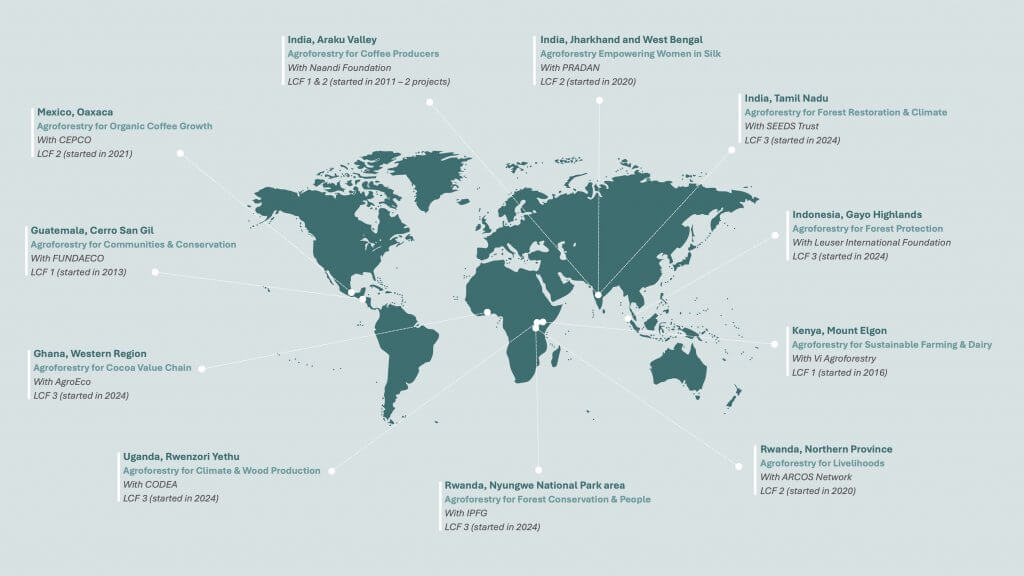
By improving soil health, water management, and biodiversity, our projects strengthen resilience and diversify incomes. They support coffee and cocoa systems, enhance milk production, and empower women in silk production. They protect forests, regenerate soils, and safeguard vital watersheds — demonstrating how people and nature can thrive together.
Three standout projects — in Guatemala, India and Rwanda — highlight the range and impact of our agroforestry work.
GUATEMALA – CONSERVATION AND COMMUNITY DEVELOPMENT, HAND IN HAND
In Guatemala’s Cerro San Gil Mountain range — a vital watershed and biodiversity hotspot — Livelihoods and local non-governmental organization FUNDAECO are restoring ecosystems while supporting rural Maya communities. Years of slash-and-burn farming, cattle grazing, and monoculture have pushed communities into fragile forest zones, degrading land and threatening water resources.
Since 2013, the project has restored over 1,600 hectares, planting 1 million trees — including timber and non-timber species, alongside short-term products such as cardamom. These species help stabilize the soil, generate sustainable income, and provide ecosystem services that support the protection of Cerro San Gil’s biodiversity and ecological connectivity.
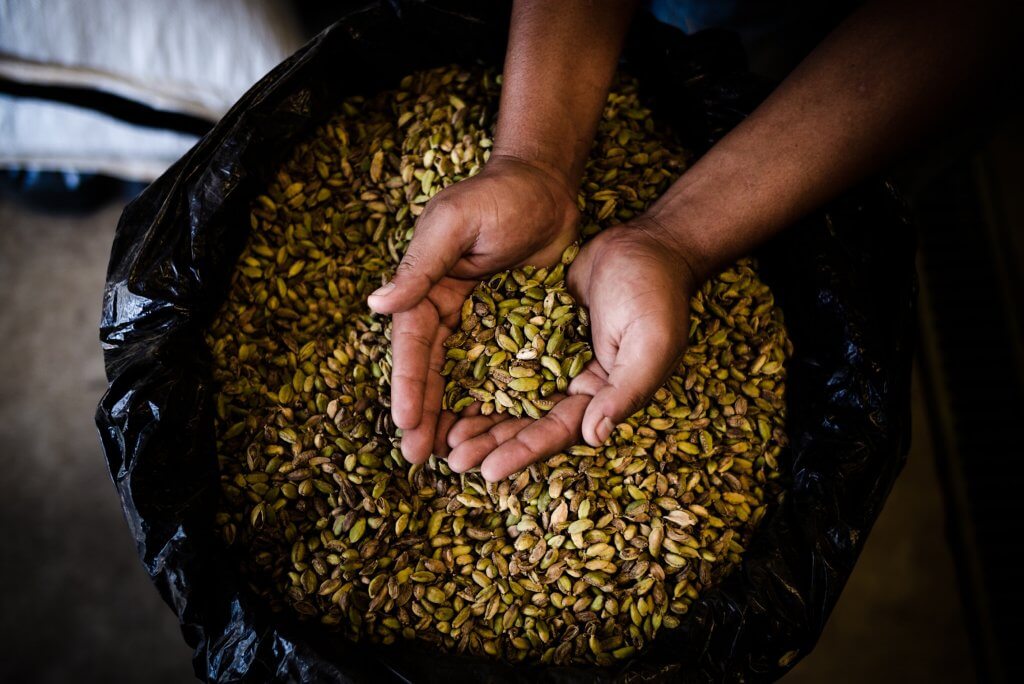
Approximately 750 farmers have been trained in sustainable land management practices, including forest inventories, rubber harvesting, and fire prevention. Since 2021, communities have also begun harvesting rubber, which is becoming a new and regular source of income, while continuing to grow high-value species like cocoa, citrus, and coffee alongside food crops.
The foundation of this impact is a strong partnership with FUNDAECO, whose local leadership is essential. As FUNDAECO’s founder, Marco Cerezo, emphasized early in the project: “One must simultaneously address the issue of nature conservation and rural community development. We cannot achieve one without the other.”
With support from LCF #1, the project is expected to sequester 600,000 tons of CO₂ over 20 years.
Read the full story of how forest restoration is transforming lives and nature.
INDIA – THE ADIVASI WOMEN’S JOURNEY FROM SEED TO SILK
In the forested regions of Jharkhand and West Bengal, Livelihoods and the Indian non-governmental organization PRADAN (Professional Assistance for Development Action) are working with Adivasi women to revive Tasar silk rearing — an ancestral tradition once central to tribal identity and income. After decades of decline due to disease, poor practices, and forest degradation, the project was launched in 2020 with support from LCF #2.
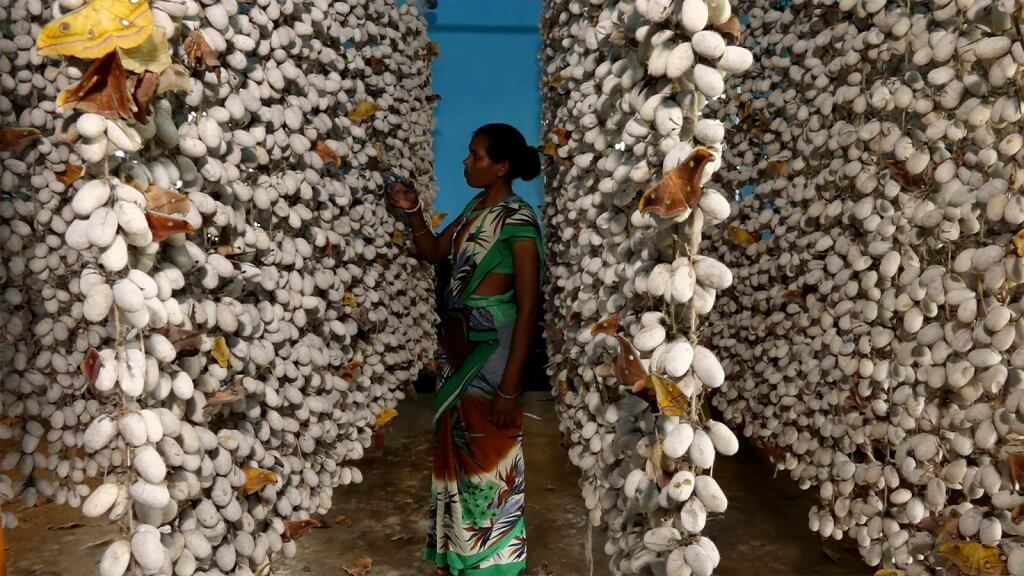
On more than 3,000 hectares of degraded private land, communities are planting indigenous Terminalia (Arjuna) trees, the natural host for Tasar silkworms. The project is benefiting more than 5,000 families — most of which are women-led. Over its 20-year span, it is expected to generate over 5,000 rural jobs and sequester approximately 1.4 million tons of CO₂.
Building on this success, PRADAN has secured co-funding to strengthen the Tasar silk value chain, which began with plantation and cocoon rea/ring and has now expanded to spinning, reeling, yarn production, and most recently, training women in weaving fine silk fabrics.
By integrating the entire value chain, the project is not only enhancing efficiency but also amplifying women’s voices, bargaining power, and household influence — with many emerging as the primary breadwinners for their families. More than an income source, it’s a path to dignity, autonomy, and ecological stewardship for communities long excluded from economic and environmental decision-making.
Read the full story of how Tasar silk is empowering women and restoring nature.
RWANDA – FROM ERODED HILLS TO THRIVING FARMS
In Rwanda’s densely populated Northern Province, steep hills are both a lifeline for smallholder farmers and a source of vulnerability. Prolonged intensive use combined with erratic rainfall has caused severe soil erosion, reduced fertility, and increased pressure on scarce land resources. In response, Livelihoods, in partnership with the regional conservation organization ARCOS Network and local authorities, is supporting a large-scale agroforestry effort to restore land health and secure rural livelihoods.
Since 2020, more than 24,600 farmers have planted fruit, timber, and firewood trees across 15,000 hectares, helping to stabilize slopes, reduce runoff, and improve water retention.
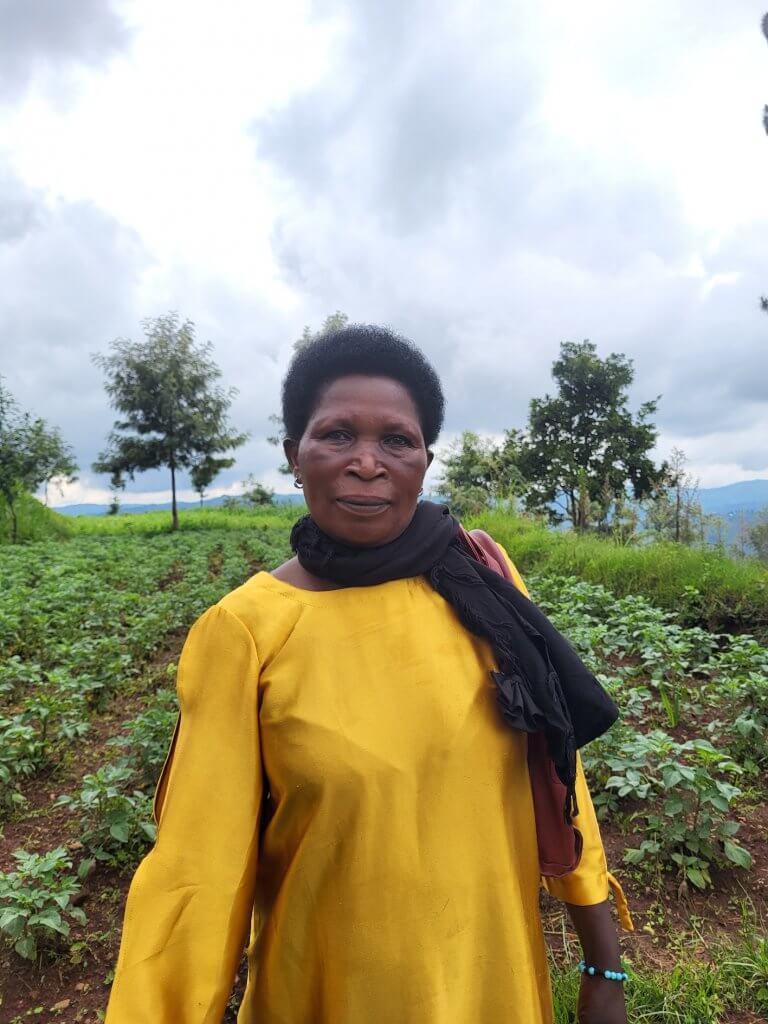
“We were trained on how to care for our trees. Before, our avocado trees could take up to 10 years to produce the first harvest. The ones we planted now take only 3 years and are ready to harvest.” shared Margaret, a farmer in Rulindo. Photo credit: Livelihoods
With support from LCF #2, The project is expected to sequester 2.2 million tons of CO₂ over 20 years and strengthen community resilience amid climate variability.
Read the full story of how agroforestry can improve soil health, productivity & livelihoods.
On the Ground with Partners to Witness Change Taking Root
In May 2025, Livelihoods welcomed a group of investors and board members to visit our agroforestry projects in Rwanda. From the ARCOS-implemented project in the Northern Province — now five years in — to early-stage efforts with IPFG near Nyungwe National Park in the south, the visit offered an immersive look at how degraded land is being restored through the work of farmers, local non-governmental organizations, and field teams.
Partners including DEG, Hermès, L’Occitane, Mars, Mauritius Commercial Bank, Schneider Electric, and Voyageurs du Monde joined the field experience. More than a showcase of progress, the visit reinforced our collective commitment to long-term investment in landscapes, livelihoods, and the trusted partnerships that drive meaningful change.
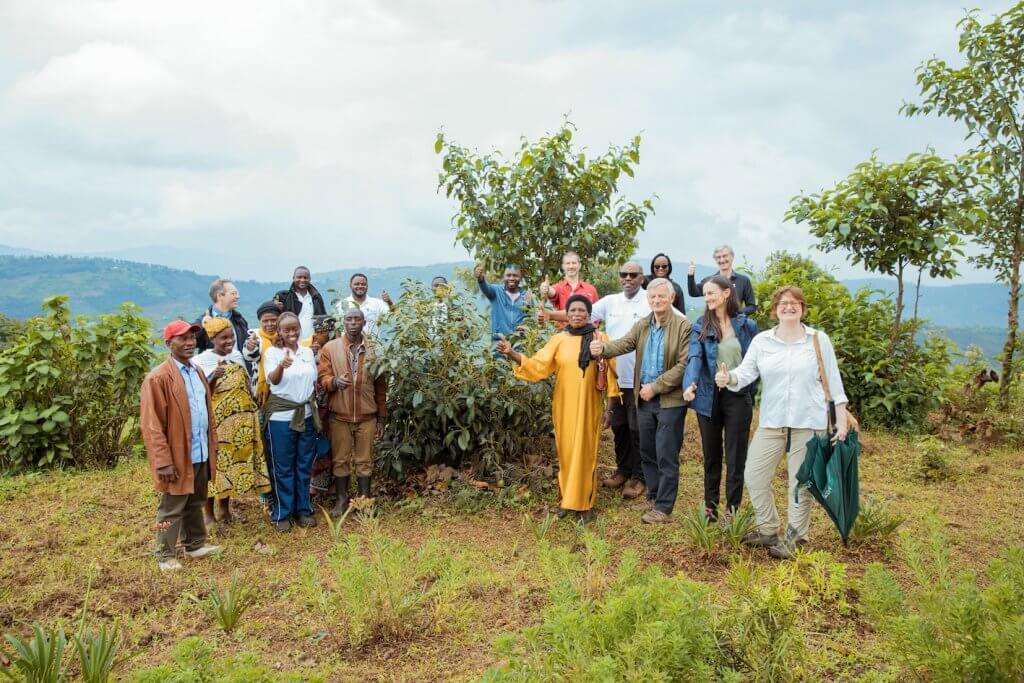
Our Long-Term Vision for Agroforestry and Rural Development
Agroforestry is not a one-size-fits-all solution. It requires localized, adaptive approaches that sit at the crossroads of climate action, food systems, and rural development. To achieve meaningful and lasting impact, our approach is rooted in key principles that guide every project.
- Sustainable, ecologically intensive practices
- Long-term commitment to communities and ecosystems
- Local leadership where farmers co-design and drive change, not just adopt solutions
- Strong partnerships across private, public, and grassroots actors
- Integrated social, environmental, and economic outcomes
Agroforestry offers more than environmental gains — it strengthens communities and secures food systems. For the past 15 years, we’ve seen how, when rooted in local knowledge and long-term collaboration, it can regenerate both land and livelihoods.
As we deepen our work with partners on the ground, we remain committed to solutions that are inclusive, grounded, and built to last. The road ahead is complex, but change is already underway. And we know it grows stronger when we grow it together.


